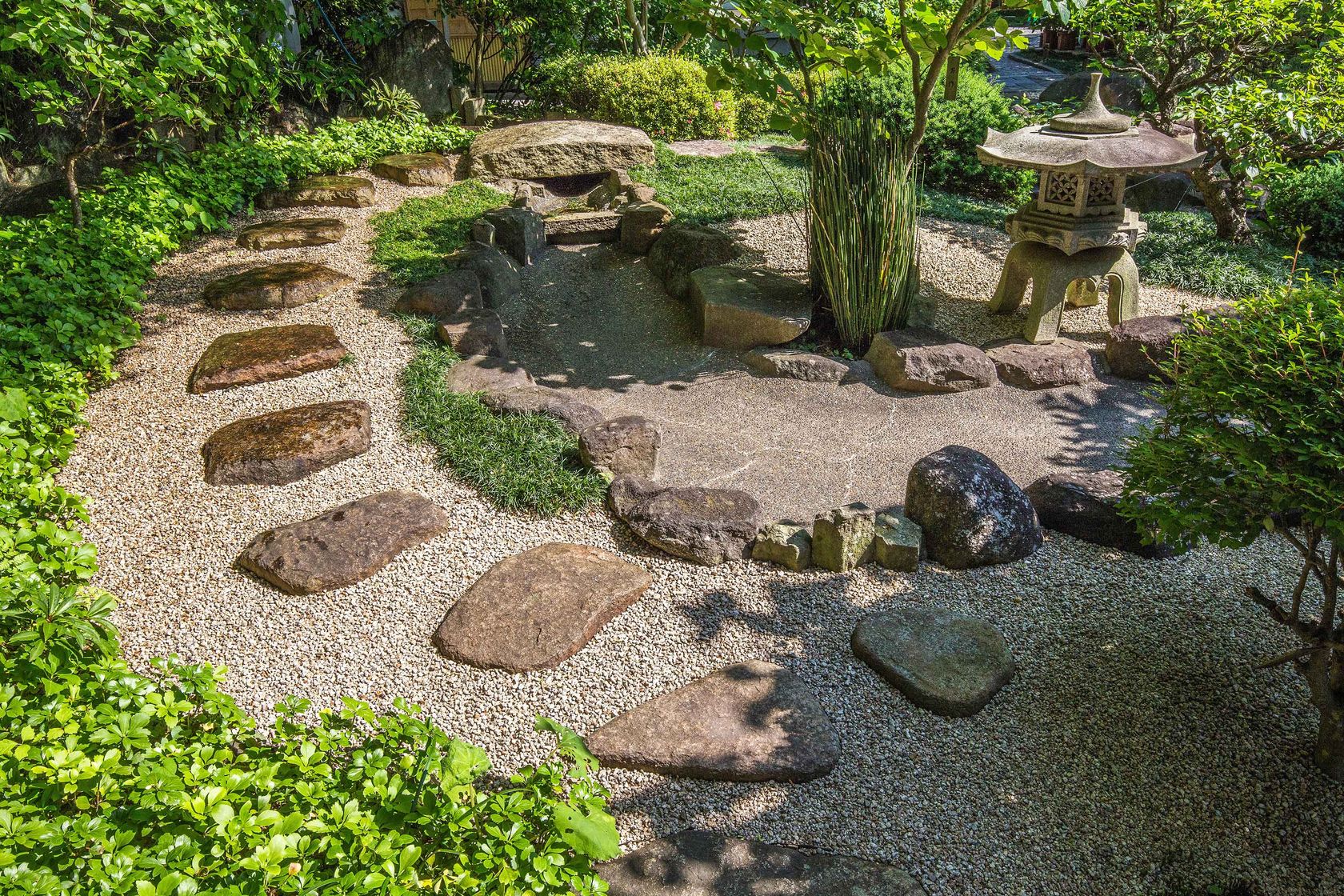

Paradise Island, formed by three large boulders in the Japanese Garden lake, is the symbolic center of the garden. Two additional stones in the water at the head of Tortoise Island suggest other tortoises swimming. The head of the tortoise on Tortoise Island is the tilted stone at the north end of the island, the tail is at the opposite end, and the legs are stones on both sides. On Crane Island, trees planted to extend over the water represent the wings of cranes in flight. Tortoise Island and Crane Island, both symbols of longevity in Japanese lore, are inaccessible to the public. Water’s sounds are music in this environment. Cho-on-baku is the Waterfall of Tidal Sound. The Blue Boulder Cascade, Seigan-no-taki, is constructed with three great steps symbolizing heaven, earth, and man. The small waterfalls suggest mountain cascades.

Water is always present, either actually, as in the lake symbolizing the ocean, or symbolically, as in the dry garden where the gravel is raked into patterns representing waves on the ocean. Such forms are popular because they permit the garden visitor to observe different vistas from divergent locations around the lake’s perimeter. The chisen garden is the most orthodox and popular style among all Japanese garden designs. The main feature of Seiwa-en is the four-acre lake, the principal design element in any chisen kaiyushiki, or “wet-stroll” garden. It is a world in microcosm, featuring carefully designed waterfalls, beaches and islands, sometimes with minimal plantings, as in the raked dry gravel gardens. The visitor to Seiwa-en will see distinct aspects of its beauty when viewing it from different vantage points. Great care was taken with Seiwa-en to ensure that the Garden would be traditionally authentic, incorporating in its design many concepts that make a garden more than greenery. The Japanese Garden also includes various garden styles that were developed by the Japanese in prior centuries. Because of the extensive lawn areas, they possess a feeling of openness unique to this style.

Such gardens, with a lake as their main feature, were popular among the Japanese feudal lords or daimyo of the 17th and 18th centuries. Rather than the typical garden filled with striking statuary, showy plants and flowers, the Japanese Garden is a monochromatic understatement, in which the viewer is permitted the thrill of personal interpretation and discovery. The Japanese Garden, dedicated in 1977, was designed by the late Professor Koichi Kawana, a native of Japan and lecturer on environmental design and landscape architecture at the University of California, Los Angeles.


 0 kommentar(er)
0 kommentar(er)
